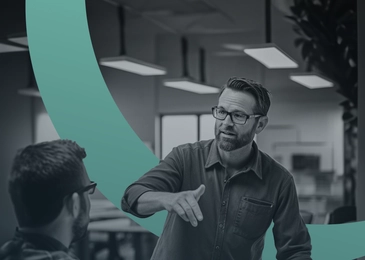It has been said over the past couple of years, that procurement departments are becoming increasingly powerful. They dictate how negotiations unfold as value propositions are torn apart and prices lowered until vendors can hardly think straight. It sounds like a horror story, right? But it doesn’t have to be that way. Dealing with procurement is always going to be a challenge, but if you understand their game, it will be much easier to play yours.
The following five tips aim to do just that: Help you stay on track while negotiating with procurement.
1. Get to know procurement
Your team has objectives to achieve, but so does procurement. Understanding this, and acting accordingly, is really the first step to a successful sales process. Do not be afraid to ask procurement what their main targets are. The answer will help you understand how they measure success, and how you can meet expectations. Is it finding the best service? The lowest price? Or the biggest possible return on their investment? The sooner you know the more likely it is that your offer will bring home the proverbial bacon.
The objectives of procurement can usually be divided into three different categories: Business objectives, operational objectives and personal objectives.
To understand your customer is pretty basic advice, but sales people have a tendency to freeze up, when they face procurement. In reality, people in procurement are just like sales people. They have a manager and want to reach their goals. If you can learn what those goals are, you can help achieve them and everything will go more smoothly. It’s only natural.
2. Prepare to be discredited
This is not as harsh as it may sound. But procurement will attempt to tear apart the value proposition that you have established with the business unit buyer. Why? Procurement’s tactic is to nullify value propositions. This will allow them to compare prices among vendors without any restrictions. By focusing on discrete units, as opposed to the overall deal, procurement can get away with comparing least common denominator pricing, effectively arranging their own ‘best deal’ across the different vendors.
To achieve their own objectives, procurement is going to use influencing techniques. Sales people need to be prepared to handle such familiar foes as bluffing and good cop versus bad cop.
The best response to these tactics? First rule: Never give in to pressure. Start off by building strong relationships with the business unit buyer. This will make it more difficult for procurement to interrupt your value proposition. Secondly, make your business case as compelling as possible. This will make it difficult for procurement to resist on the altar of ‘best deal’.
3. Get them in the room early
If you already know it is going to come down to a RFP, you might as well get your sales team to invite procurement to participate in meetings. Sooner rather than later.
Is it a matter of courage? Maybe, because not all sales teams do this. In other words: This is your opportunity to get a head start on your competitors. Get procurement into the room and learn how to read and work with them.
According to the game theory, sales people have three options. Play with procurement, play without procurement or perhaps the most aggressive one: play against procurement.
If the buyers are tough and non-cooperative, and sometimes they are, another option is to reduce the relative influence of procurement. You can accomplish this strategy by broadening your network of allies in other departments.
4. Focus on the overall value of your solution
One of the main characteristics of procurement is a desire to control the sale and avoid surprises. By controlling the sales process, procurement’s objective is to reach an end game where offers from different vendors can be compared in an apples-to-apples fashion. Naturally, this will pressure sales teams to lower their price tags until no other competitor can follow. The winning sales team may feel successful, but the real victor is procurement.
What you really want is to avoid a race to the bottom. The only way to do this is by adopting a selling mantra that places a premium on the specific value that only you can create. Value-based selling, basically. Define the solution that will help the customer overcome their challenges and the solution that contributes to the realization of the customer’s business objectives. Quantify and communicate the specific value of your solution as it relates not only to the interests of customers, but the interests of individual stakeholders, including procurement, as well.
Formulate your offer as a total solution that can’t be broken into or replaced by other seemingly similar pieces. Never shy away from explaining, even educating, business unit buyers and procurement on why your solution is A) better and B) incomparable to competitors. Make sure that procurement is aware of the consequences if they choose to play for ‘best deal’ rather than listening to your offer.
5. Let them experience your product or service
Quite often, it’s hard to tell exactly how well words convey the specifics of your solution. In fact, from procurement’s perspective, the negotiation tactic that all products and services are equal is only facilitated if vendors stick to just reading their proposals. What you need to do is help procurement understand the benefits of your solution. And why they absolutely cannot afford to turn it down.
The most effective way to do this? Get procurement to see and use your product or service. When it happens it is not as important as the fact that it must happen. It may seem scary, but this is by far the best opportunity you have to separate yourself from the competition.
Sometimes it won’t be possible to give procurement a ‘taste’ of your solution. In these instances, make sure to bring forth a more convincing alternative than just references and testimonials. Sales people should be able to tell engaging success stories by using story telling techniques.
Action Nuggets
- Get to know procurement
- Prepare to be discredited
- Get them in the room early
- Focus on solution value
- Let them experience the product of service



